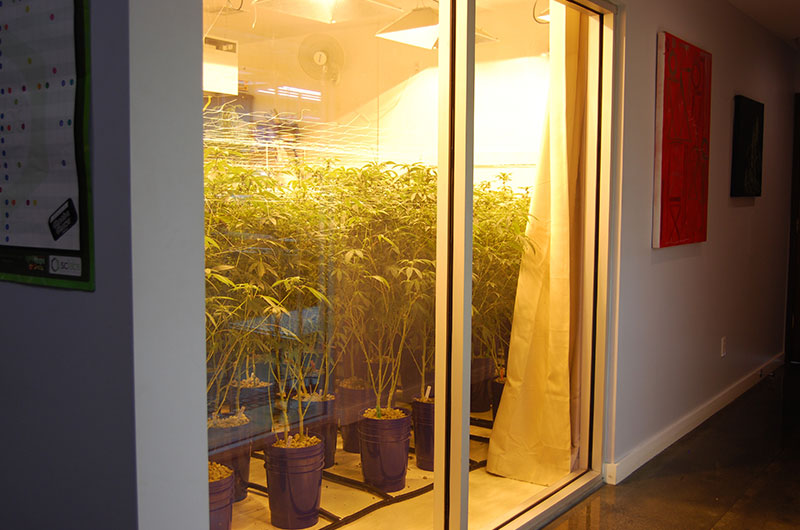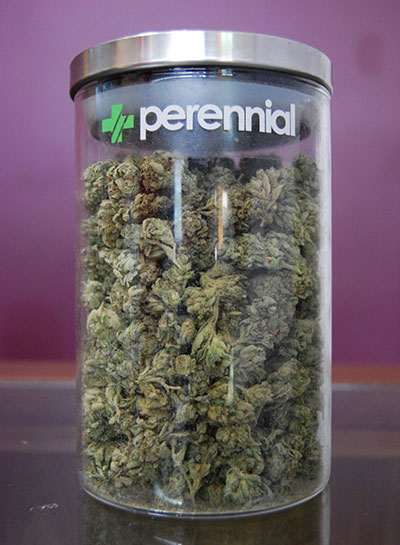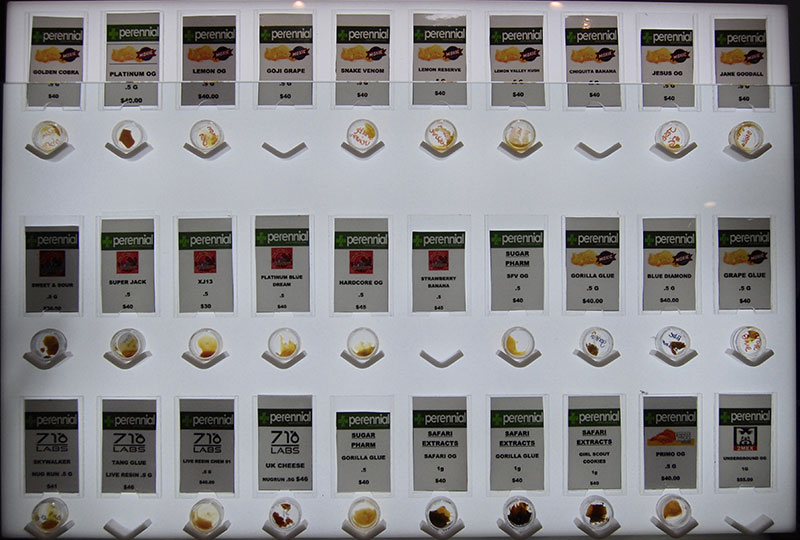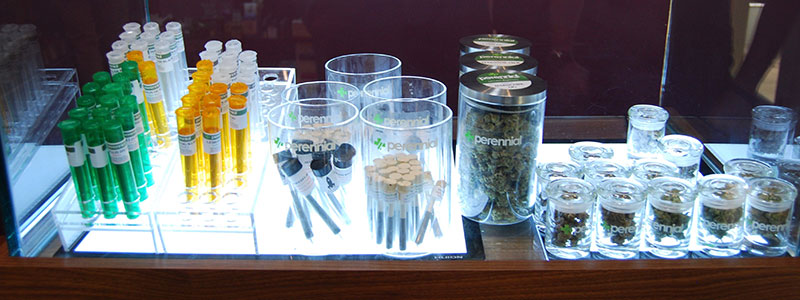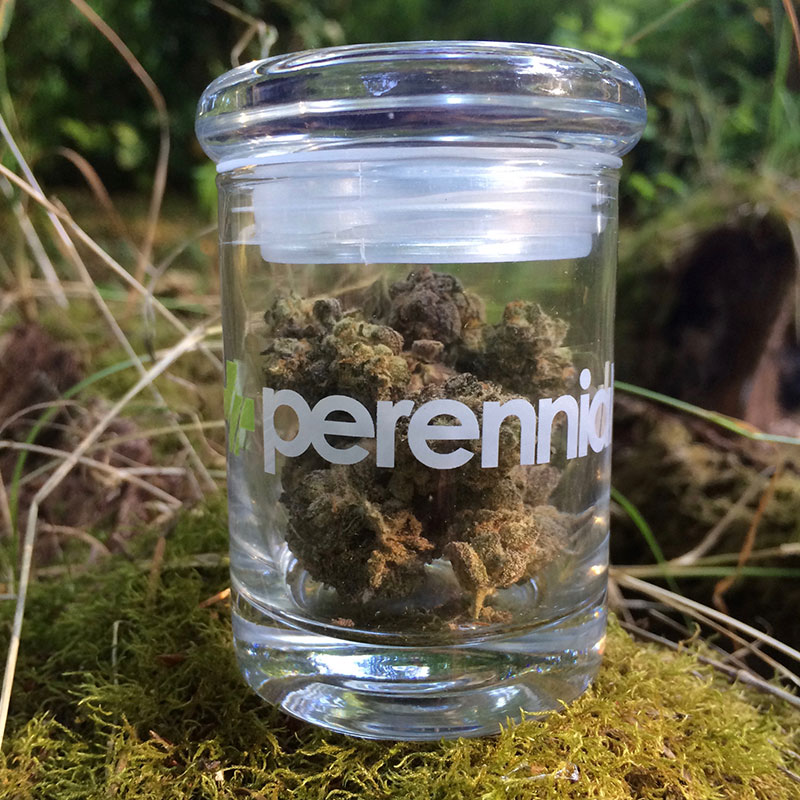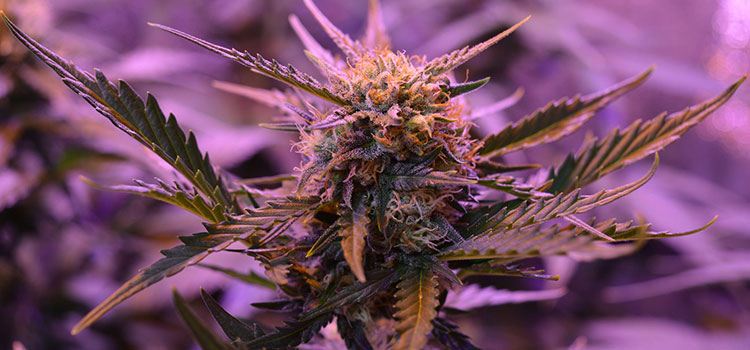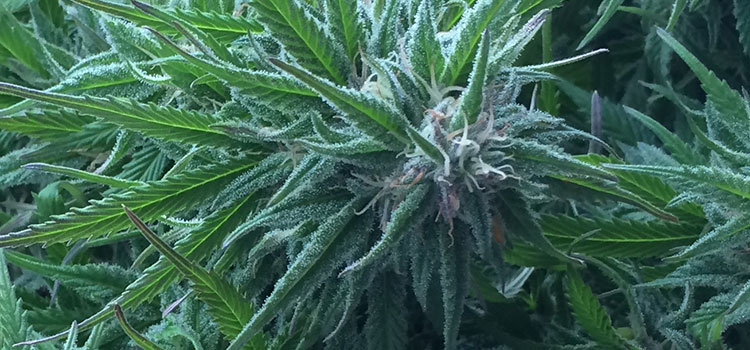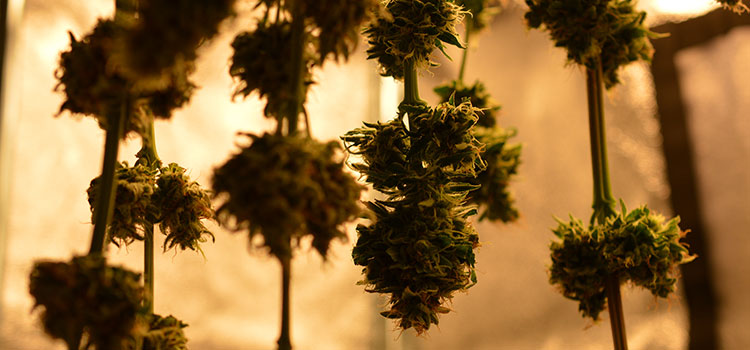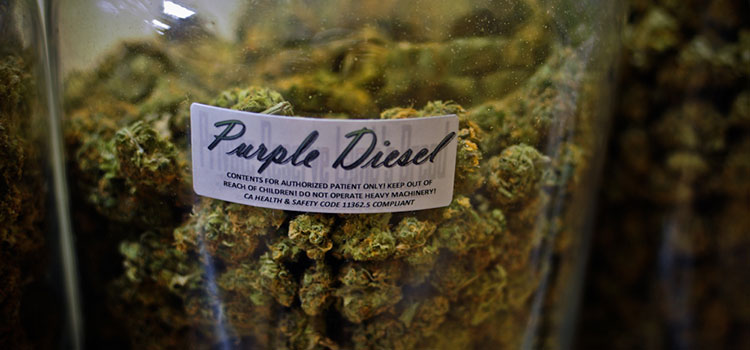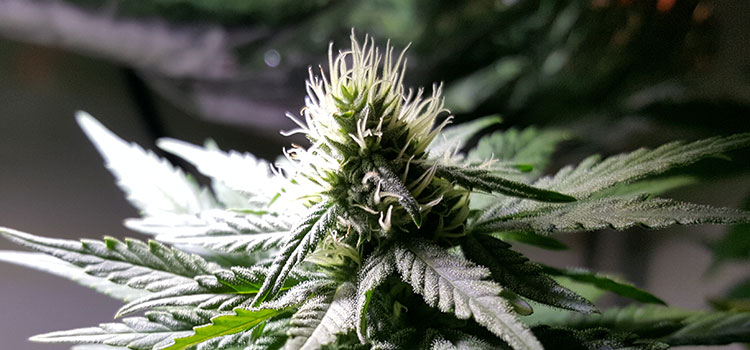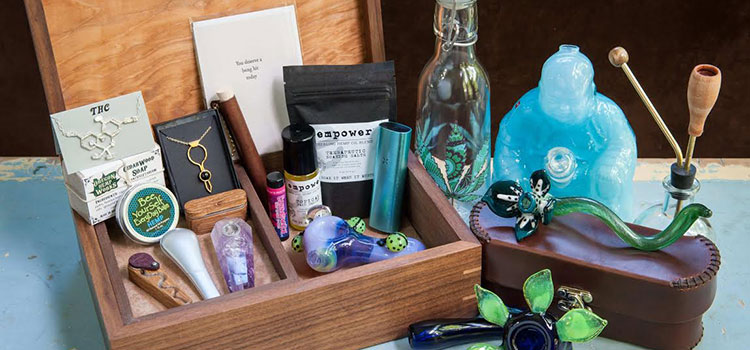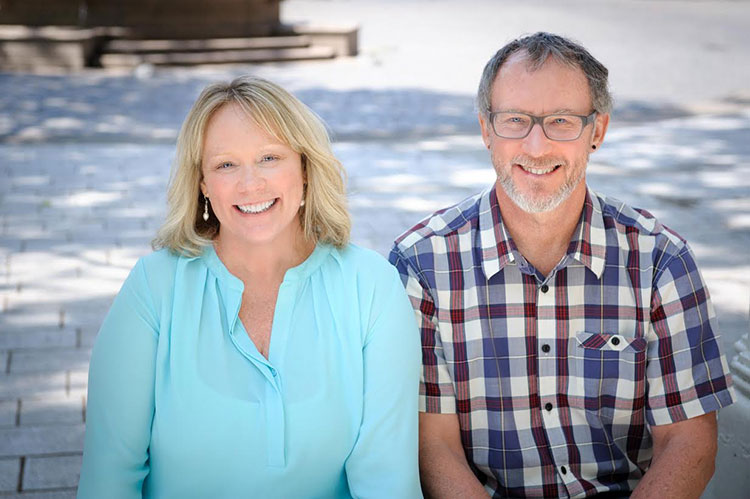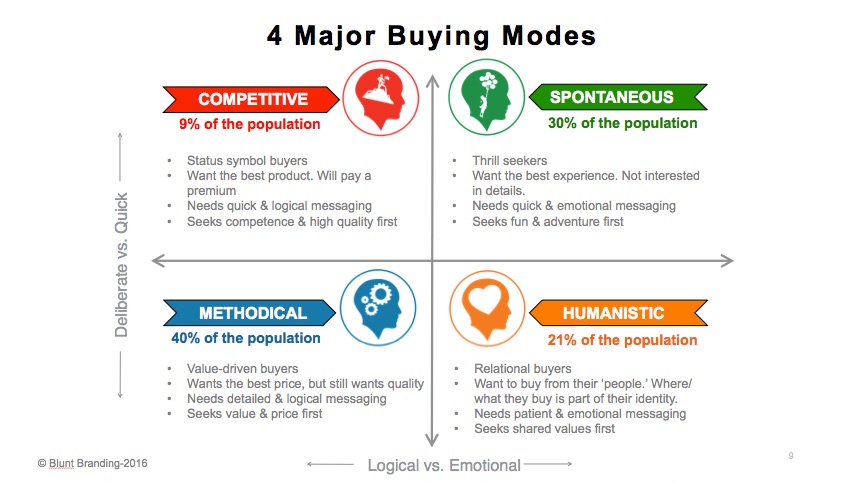Aeron Sullivan is the founder of Tradiv, an online marketplace for wholesale licensed cannabis in Colorado. Tradiv has been recognized as an innovator in the cannabis industry, changing the way that cannabis commerce happens at this pivotal moment where a traditionally opaque and informal market has been pushed into the realm of transparency and formality. Our host Shango Los recently met with Aeron to discuss the evolution of his company and business model. Listen to the podcast below, or scroll down for the transcript!
Subscribe to the Ganjapreneur podcast on iTunes, Stitcher, SoundCloud or Google Play.
Listen to the podcast:
Read the transcript:
Shango Los: Hi there and welcome to the Ganjapreneur.com podcast. I’m your host Shango Los. The Ganjapreneur.com podcast gives us an opportunity to speak directly to entrepreneurs Cannabis growers, product developers, and cannabis medicine researchers all focus on making the most of cannabis normalization. As your host, I do my best to bring you original cannabis industry ideas that will ignite your own entrepreneurial spark and give you actionable information to improve your business strategy and improve your health and the health of cannabis patients everywhere.
Today my guest is Aeron Sullivan. Aeron Sullivan is founder and chairman of Tradiv, an online marketplace for wholesale licensed cannabis in Colorado. Today, we’re going to talk about the Tradiv business model and the country’s evolving cannabis sales channels. Welcome to the show Aeron.
Aeron Sullivan: Hey, thanks for having me Shango.
Shango Los: Aeron, let’s start at the very top. Let’s give folks a general outline of the service you provide to give them a better context for the rest of our conversation.
Aeron Sullivan: Absolutely. One of the ways that we use a comparison to help people understand what we do is we use Amazon. Now, Amazon is a business to consumer distributor. They both help process, and ship, and manage orders for millions of consumers all around the world. Now the businesses that sell those products are not owned by Amazon. Many of them are independent businesses that are utilizing the Amazon platform to sell and distribute those products.
Similarly, we use a platform that helps concentrate producers, edible manufacturers, and cultivators to sell their products directly to licensed retailers and dispensaries in the markets that we serve, all using a technology platform that helps unify it in the center of that ecosystem.
Shango Los: I know there’s a certain bar to entry because everybody would want to participate and just to be clear for the listeners in states other than Colorado. At this point, you really need to be both in Colorado and have a license by the state correct?
Aeron Sullivan: That’s correct. Actually, as of right now we are doing our early on-boarding for beta customers in Oregon and California depending on where they are in that market or their states. I would encourage anybody in the California, Oregon, or Colorado markets to reach out to us but only those in the Colorado market we be able to serve really from the point that they sign up. The rest will have a little bit of a wait.
Shango Los: That makes a lot of sense. I expect that with how huge the California market is going to be, getting started early is to everybody’s advantage because everybody is going to suddenly want to get involved out once. If you can get involved with your company, get your things all setup and then just kind of hang out and wait for the rules making to happen, that’s probably going to be to everybody’s advantage.
Aeron Sullivan: Definitely, I think the thing to remember in California specifically is that MRSA was passed last October and signed by Governor Jerry Brown signed. That’s taking effect in January of 2018, however we’re all going through the rules making process right now. The State of California, the governor’s office is pretty clearly communicated to Cannabis businesses that they can operate on the old collective model until January 2018. At which point there is going to hard switch to a more commercialized, tracked system.
Again, that doesn’t take effect until 2018. Those are the one to get involved early and have a really good opportunity to do that now. It’s just the patch work of legislation and rules across the different municipalities and it need to be looked at closely make sure that you’re not breaking law frankly without really even knowing it.
Shango Los: Let’s bring our attention back to the marketplace. I really enjoyed the demo from Willy the other day, walking me through it. It was seeing a technology from the future. College me would have been like “Oh my God, I can’t believe this exist.” It is a wholesale market place online. What you’re doing is connecting buyers and sellers. Do you find that having the buyers and sellers all in one place has caused the prices to settle in to a small range or are the prices still very variable?
Aeron Sullivan: What we find is that the market as a whole is not really much, it’s not more volatile or less volatile with us in place. However, when calling or inquiring about prices from business to business you’re now getting less spread on those prices or less variance if you will. The average is still moving where the average moves, but I’d say you have a tighter grouping towards that center, mean, or average than you would otherwise without us.
Shango Los: Also with that said, one of the things that I found interesting is that you still have premium level flower that is still pulling in premium prices because maybe it’s organic, or veganic, or it’s made by a particular producer who’s got a great reputation and their wholesales for a premium price. It’s not like the marketplace is bringing everybody to the middle so much that you can’t be a premium processor with high end prices. I bet you, your customers really appreciate that?
Aeron Sullivan: Yeah. I would even dare to say that for a boutique and more specialized growers, they actually get more differentiation now because you have less price variability amongst the different cultivators. Everybody knows where their product falls, if you have really good organic greenhouse you might be getting a higher price point along with those that have really good indoor. Every vendor, every buyer is different. They have a different customer base, maybe their customer base likes organic, maybe their customer base really like strong THC, indoor hydroponic.
Both of those can be “quality premium products” that give you a higher price point above average. You have to be able to find those things, you have to find those distinguishing qualities to even make that decision. We’re making a lot easier for dispensaries and retailers to consume that information in a quick manner to make the purchasing decision.
Shango Los: Are you finding that there’s a particular section of the market that just doesn’t sell as well as the other? For example, do you find that “Yeah, there’s premium prices but that stuff doesn’t go as fast. Yeah, there’s low-end stuff but it doesn’t go as fast.” Is there a particular part of the market that is slower than the rest?
Aeron Sullivan: I can tell you there’s a particular part of the market that’s faster than the rest. That’s those with good quality product, selling them at reasonable prices that sells very quickly. If you’re trying to get a price that’s really outside of the quality of the product, you might get it but you’re going to wait a while. You’re going to have to be patient.
For those that produce I would say outdoor, there’s a big spread on outdoor. There are some that grow really exceptional outdoor but by in large it’s always sub-par compared to green house or in-door. They like to send that to manufacture. Manufacturing can find their $900 to $1100 popcorn buds, or premature buds, or even the shake and the byproduct that’s a good high quality. When it comes out the other side, they’re going to look like what they do if they got trimmed flower.
They’re paying a lot less for that and in the past, when you’re buying trim you don’t really know what you’re getting until it gets to your doorstep. We identify what’s the level of shake on it, is it sugar trim, and sun leaf is it all sugar? What’s the reputation on yield off of their trim, off their previous harvest? Did we have all that information? When a manufacturer is looking to make a purchase, this is a lot more certainty in what they’re buying than in the past.
I think across the spectrum. If you have something of quality, your buyers will all going to look different. Different shapes and sizes, but as long as its good quality, for whoever the eye of the beholder is and also price reasonably, it will move fast. If you’re trying to get too much for it’s going to take some time.
Shango Los: I can imagine that you’ve had a handful of experiences with producers where either A, they thought that their product should demand more on the market that it does. Also, the other side, people who they didn’t have as much faith in their product now suddenly they’re getting more for it. Because the markets got its own intelligence way beyond what the producer themself thinks.
Aeron Sullivan: It’s really true. I have an example is we just launched … We’re launching full quality assurance and quality control tasking here really soon but we launched the beta in Colorado just to refine the processes and make sure it work. We launched something very simple. It’s pesticide tested trim. Period. We went a little further than typical normally you have a lab assist, “Yeah, I tested it for pesticides.”
Everybody knows there’s been a lot of an apprehension on the market side to believe the results of those lab tests and to trust those recalls that come from the state. There’s a lot of animosity that’s been generated because of that sort of you versus us mentality with now the businesses in Colorado and the state who’s coming down hard on pesticide tests. We actually did proficiency testing with one of our labs. We got the state levels from the Department of Ag on the threshold for pesticide within the cannabis matrix.
Our director of quality assurance and control Jeanne Dugan did a great deal of work to put this very simple or one would think simple beta and test. That’s to ensure and guarantee that trending purchase by manufacturers does not have pesticide in it. We didn’t know how the market was going to react, that’s the first time that’s really been available and invalidated by a third party. We have dozens of manufacturers that now even in a short two weeks after launching that beta, will not buy trim that is not certified by us.
Clear market signal, that’s what people want. They want safety, they want risk mitigation, they want a third party making sure that these things are being done the right way which de-risks their business and they don’t frankly have to do it themselves.
Shango Los: That’s a really great way for the industry to stay ahead of the regulators too because if we are starting to come up with ideas like that, it takes the onus off the state or God help us the federal government to enforce that in their way. It lets us to choose how our industries going to be run ourselves instead of dragging our heels until they do it for us. We need to take short break right here, we’ll be right back. You are listening to the Ganjapreneur.com podcast.
Marketing and brand agencies can be really unhelpful sometimes. I mean you pay them and you have meetings but there doesn’t always seem to be real value created. They’re sure they may make you a logo or a website and you talk about the image your company want’s to project. That is not always reflected in the bottom line in the form of actual revenue. For a lot of startups everything is got to feed the bottom line just so they can survive.
That’s what Blunt Branding does, they feed your bottom line. Blunt is very different from other agencies because their principles Kirsten Nelson and Anthony Garcia are experts in psychological marketing. For example, they don’t just write copy for your website. They write copy that includes hooks and triggers for every Myers Briggs personality type. Most copywriters tend to write only for people who think like them. Blunt Branding does better than that.
They reach all your potential customers. In fact, if there’s a certain kind of customer that you don’t want, say argumentative folks, Blunt will write you copy that attracts everyone else but will tend to repel the kind of customer that gives you grief. I’m not kidding. This strategy is used by their attorney clients all the time. Your brand is much more than a logo. You see most customers wait for some company to wow them with something more than they came shopping for especially when there are so many options.
They’re looking for a brand to anticipate their questions or solve their problems or just make them feel seen, heard, and valued. I know that can sound corny but we all know that we buy from the companies we feel most engaged with, and Blunt Branding will get them climbing over your competitors to get to you. If you cannot risk business failure, you should be working with a marketing team who understands that their goal is not just to make you pretty but to directly increase your sale success too. Go to bluntbranding.com to find out more.
Welcome back, you are listening to the Ganjapreneur.com podcast. I am your host Shango Los. Our guest this week is Aeron Sullivan up Tradiv. Aeron before the break, we were talking about the new policies that you guys have implemented to pesticide test all of the trim that’s going through and you’re finding that the market is responding really strongly to that and switching to buying the stuff that has been tested. That is great for everybody across the board.
When I was receiving the demo of the platform, I noticed that some of the sellers didn’t have their certifications up, their potency testing and such. Do you find that, that is simply the producers, it’s their follow through getting it actually on to their listing, or that they aren’t having it tested, or that I guess it’s just one of those two. Why do you find that they’re not all there? I would think that, that would be kind of a universal thing?
Aeron Sullivan: Absolutely. Sometimes it depends on when the product was posted. If the products been up for week, then more than likely the lab test has been already uploaded. If they just posted the product, it might take a day or two, sometimes even three for the lab test to actually come back. What we’ll do is because delivery can take anywhere from two to three days then oftentimes there is a little bit of a wait where we actually have the opportunity to let them go get the test results, bring them back before the product is actually sold.
In any case, if a product is sold whether or not we have a posted lab result or not, the lab result will always be gathered and then provided to the dispensary that’s purchasing at the point of delivery to ensure that nothing ever gets delivered or purchased without certified lab results traveling with it. Now, that doesn’t necessarily mean that it’s tested for heavy metals, solvents, pathogens, potency, and pesticides that just means for that particular product it meets the state testing requirements whatever they may be for that particular product.
In the case of our trim, we’ve gone above and beyond the state required tests to ensure that it’s also tested for the 15 different pesticides that the State of Colorado currently recalls for.
Shango Los: I can imagine how we’d all like all of the products to be tested for pesticides, but that’s especially important in the trim market because we know that most of that stuff is going to be concentrated into oil which, if it’s got pesticides, means that the pesticides are going to be concentrated too. Man, I don’t want to be dabbing that stuff. Hell, I don’t even want to be eating that in an edible.
Aeron Sullivan: Absolutely. Frankly, Shango that’s why this is an easier problem than many people think. Trim comes from flower. Manufacturing products come from trim and flower, edibles come from trim and flower. Everything comes from trim and flower. If there was a requirement even during the growing process maybe at one or two stages then eventually it harvest to test just the full bulk plant for pesticides before it enters the rest of the supply chain from that cultivator.
You can stem pesticide adulteration, contamination across the entire market by simply testing the flower before it’s been completely cured, before it’s been completely dried, before it’s been trimmed, before it’s now in the supply chain and nobody knows what happened to it.
It grows from one place and you can test those for pesticides and literally, unless you’re worried about black market product moving it’s way into manufacturing facilities which frankly is a much larger issue than pesticide testing. Then you’re able to stand the flow of pesticides and nip that in the bud very early. That’s really what we’re looking to do in the new markets and and help Colorado get that point where there isn’t a product sold that could possibly have pesticides. It’s wonderful that we’re giving medicines and medications to small children with seizure disorders for the first time in their lives they can live a day without a seizure and actually start to grow as a human being.
We’re not doing them a service if that same medicine that’s providing them the first relieve in their short life that they’ve had, we’re also heavily dosing them with carcinogenic pesticides. It’s almost beyond me that we’re allowing that to happen. So far the state, most of the state governments I think Oregon might be one of the exceptions hasn’t been able to adequately attack this issue, so private enterprise is going to have to do it.
Shango Los: I can see how the trim that is in the market being used for this concentrates is going to be a higher quality because of your new policy. It also going back to the price of trim, I can imagine that the trim market is like insanely hot since it’s a precursor for pretty much all of the value added products. Yeah, of course the flower market is hot. This huge portion of the rest of the market are all of these edibles, and dabs, and RSO, and all of these other things that are all from trim. I can’t imagine that trim lasts very long in the marketplace before it’s picked up.
Aeron Sullivan: No, typically we have buyers for trim before it’s posted and tested. Yeah, we always have request for trim. I mean every once in a while something will sit on there for 24 to 48 hours but it’s pretty rare when trim is not purchased up right away. It’s because the manufacturer’s margins are most impacted by the oil and the cost of the goods of the actual THC going in the product. I mean in many cases they comprise 70% of the cost of good sold.
If you can create oil from product that you’re buying for $350 to $500 a pound and it has a yield that’s at least half of what full flower at 15 to 1800 would do. Then yeah, that’s a pretty good way to help have the margins and be more competitive.
Shango Los: I can imagine too that with the demand being that high, there are definitely days that low-end or unfinished flower gets sucked up by the trim people real fast.
Aeron Sullivan: There’s actually quite a few contract grows that produce what wouldn’t be shelf quality outdoor. It’s 16% THC, you don’t have to trim its whole plant. There’s definitely a full commodity market out there for manufacturing grade of cannabis, that’s already in production. I think as you see price compression on the flower side as supply increases overtime. You’ll probably see those trim prices come down and that commodity level flower probably moving down to the current trim price points.
Many products I think in the future is especially concentrates will probably be whole plant extracts because that’s what the markets going to demand because prices gone low enough on flower to be able to accommodate that sort of manufacturing method.
Shango Los: That’s really creating at a whole new tier of producer because historically in the US the really bad stuff was all being smuggled in from Mexico as brick weed. The stuff that was here or was coming in from Canada, British Columbia, it was all nice, kind nugs and that’s what everybody wanted to have is to sell things that were selling bag appeal. It takes a lot of extra effort and love to get stuff that looks that incredible.
Now, there’s a whole other tier I can imagine evolving of people who are like, “All right, we’re not going to use pesticides but we’re also not going to put in all the extra effort that makes it gorgeous because we’re just going to sell a hell of a lot of this in the manufacturing.”
Aeron Sullivan: Absolutely right. I’m glad you bring this up and so there’s a lot of people that have invested a lot into indoor grows or indoor warehouses. There are brands out there right now that are going to be built on indoor warehouse grows. Good high quality product, looks, has nice curve appeal, it’s coming out of this indoor grows. A lot of vertically integrated businesses in climates that aren’t conducive to outdoor greenhouse growing, have indoor grows.
Those indoor grows are going to help build those brands but for those entrepreneurs that are looking to get into the industry now that haven’t been building in Brandon, Colorado for three to four years and don’t already have an indoor grow, I would highly recommend, I would stress that anyone looking to move into cultivation now, invest in greenhouse. Because greenhouse technology is getting so good that people can produce flower that looks, feels, and tastes like indoor hydroponic.
They were able to do it in a greenhouse system at one-fourth or one-fifth the cost of good sold. We’re already seeing in Colorado, when you have a lot of businesses that are making money there’s a lot of less perceived risk in the market which causes those less bold and less risk averse entrepreneurs to enter the market. You have a huge flood right now in Colorado of new cultivators who see the money moving and want to get it and there’s less perceived risk and so they’re all coming in. We have massive price compression in Colorado right now.
I would dare to say 15% of the cultivation businesses and business in Colorado right now will not be in business this time next year. Because the price of flower sold has just come down to where that high price point that indoor used to get you isn’t being achieved but their cost of goods are very, very high. That movement to good premium greenhouse and I would say commodity level manufacturing quality outdoor is probably going to be the future of the market. It doesn’t mean those businesses are going all of a sudden go out of business in the next four years.
If you have an indoor grow, near Las Vegas it’s going to be tougher anyone to grow a good premium outdoor there because the climate isn’t conducive to it so they’ll make money. As the market matures, as competition increases, as the federal government might open up interstate commerce, that competition is going to get a lot stiffer. That price compression is going to get even worse and the price of that products going to come down.
The hay day of I can just start a cannabis business and make a ton of money is over. You have to pay attention to cash flows, you have to pay attention to cost of good sold because it’s not … It might be wild west market but it’s certainly not the green rush market that it was in say 2011, 2012. It comes in a way but there’s a lot of interest now.
Shango Los: Yeah absolutely. Heck, just wait until the wait happens when we start allowing international trade.
Aeron Sullivan: Absolutely.
Shango Los: My god. Your point is well made that it takes more than just opening a cannabis business to be in the game now and to be successful because of the price compression, you can’t just have skills on the cannabis side or on the business side.
It’s really time for people who have an understanding of both. When I first started in the industry, I was providing consulting to cannabis folks who were prohibition era growers who didn’t really have legal business experience. I was helping them make the transition and understand sale cycles and things like that. At the same time, there were people who owned a chain of dry cleaners and they wanted to sell their dry cleaners and put all their money in cannabis.
They didn’t know cannabis and so they needed somebody who spoke their language who could teach them cannabis. What you’re describing is the sustainable business in cannabis are going to be run by management who have got both sets of skills so that you can both create a good product and see opportunities but also do it in an efficient way so you can keep your prices low.
Aeron Sullivan: You hit it on the head. Most of the successful businesses, and listen, this is the cannabis industry. It’s been legally illegal for two decades so nothing should surprise us at this point. Most of the successful businesses that I interact with have somebody on the business side who knows how to execute on fundamentals. They come from a professional market where there was a tremendous amount of competition.
They know how to execute it on fundamentals. They know how to watch cash flows, they know how to finance, they know how to capitalize the company, they know how to hire employees correctly, they know how to make sure that they don’t make big, red line risk mistakes that being said. I know a bunch of those guys, a bunch of those women that grow subpar products and can’t sell it no matter how good their fundamentals are.
You have the best businesses, have the fundamentals person and they have somebody that came from the black market or maybe the gray market. Because they were the only ones that have been learning how to do product creation and innovation for the last two decades. You’re not going to learn that in a year. You really do, you have to have someone that knows how to grow a good quality product. We had people, they come to us all the time and say “Hey, I’m putting in 100,000 square foot grow. I’m putting in a 200,000 square foot grow.”
That sounds sexy, that sounds awesome, but managing grow of that size is incredibly challenging, especially for the master growers who have been growing on 5,000, 10,000, 15,000 square foot plots in Mendocino and in places in Humboldt. You have to find really talented master growers that have been doing this at scale for the last 10 years and bring them into a well capitalized organization buying a 100 or 200,000 square foot grow. There’s a lot of people that have been doing this for a long time. There’s not a lot of people that know how to manage a quality grow of 300,000 square feet at scale anywhere.
Shango Los: Yeah, there’s a lack of that talent.
Aeron Sullivan: Absolutely. You have these business people come in and want to scale. You have this really talented growers who know how to grow really quality weed in a basement, in a house, on a small plot in Northern California. You have to find a really talented black or gray market individual bringing to your company that you believe not only knows, it just doesn’t just check the black, oh you’ve grown weed before.
They might have grown crappy weed, you don’t know. Just because they’ve grown it in the black or gray market does not mean that it’s good. You’ve got to find an especially talented person that you believe can do that at scale while you execute on fundamentals. It’s very challenging.
Shango Los: I want to hit one more thread before we go to commercial and that is we’re talking about the kinds of customers that you have that are probably most likely to succeed. Going through your platform, I saw that the growers have to let you know if what their product looks like changes so that they can upgrade their photo. If they change something about a strain or a product, they have to make sure to update their listings.
You’ve got people who are helping them and advising them. I find it very interesting because a big part of what you do is not the technology alone of the platform that your developers are working on. You’ve got to have this big contingent that is customer service based to help your customers wrap their head around the product itself, the service itself, but then also to reach out to them so the growers look good enough on the site to actually make a sale. I bet you that’s a big educational sales process with them?
Aeron Sullivan: No, absolutely. I mean, this is something that I believe applies to all companies in this very new fast paced world that we find ourselves in. Something that Silicon Valley did a very poor job between 2000 and 2010 with the explosion of computing technology, explosion in commodification of server space is that there’s been a period of time. I’d say the evolution of business models industries wide that thought “Hey, computers can do so much for us, we’ll make them do all the perfunctory stuff for us and we’ll make a lot of money because our margins are 93 or 94%.
That’s all good until a business comes along that does all the automated stuff you do and then backs it up with really good people and really good services. We call it value added marketplaces or service, or value added services to a marketplace or platform. Every business, every single business in the entire world is a relationships based business backed up with technology not the other way around.
It’s taking us about a decade or a decade and a half especially on the Peninsula up where there’s a lot of innovation to learn that technology is here to make humans enabled to do better not to completely automate us out of the existence. Our sales reps and our account executives, 80% of their time they spend talking to a customer. 20% of the time they spend doing back office work. For most of our clients that we interface with, it’s the opposite. There’s been 80% of their time managing order to spend like this perfunctory, rudimentary tasks.
Then 20% of the times actually talking to the customer because interaction with the customer is not the same as service to the customer. If I call to say, “Hey, how many pounds of this that you have? Does this order look good? Did I give you enough? Okay, it’s going to be there at 3 on Thursday, thanks so much for ordering.” That’s a perfunctory rudimentary interaction, that can be done digitally but when they call and take that same five minutes and say, “Hey, how did that order go? Hey, I heard you just had a baby. Congratulations. How are things going at work? Is there anything I can do to help make your wholesale management easier the next couple of weeks as you come back into work?”
Whatever it maybe, that’s real customer service and that’s why we have technology. It’s not because technology is the answer. It’s just an enabler.
Shango Los: That is incredibly well said Aeron. Hey, we need to take another short break. We’ll be right back. You are listening to the ganjapreneur.com podcast.
The Ganjapreneur podcast is listened to by tens of thousands of cannabis entrepreneurs and enthusiasts every single week. These folks are most likely your target customers and we like to introduce you to each other. Our down to earth and information rich commercial breaks can deliver your message to the cannabis business community and others who just find relief in getting high.
If you want to reach out and connect with our audience in the most personal way that we can offer, go ahead and drop us an email at grow@ganjapreneur.com and we can talk about you becoming a commercial sponsor of the podcast. Thanks for listening and being part of the Ganjapreneur family, now back to the show.
Welcome back. You are listening to the Ganjapreneur.com podcast. I am your host Shango Los and our guest this week is Aeron Sullivan of Tradiv. Aeron, before the break we were talking about the last step of the process of getting the actual products to the retailer from the producer. I’m really curious because that could be a sticky wicket right? Do you actually handle the product yourself and make the deliveries or are you just setting the deal and then the producer is actually making the delivery to the retailer?
Aeron Sullivan: Yeah. There’s a little nuance to that answer. I mean the ones for short is it depends on the market and it depends on where you are geographically within that market. In Colorado, we’ve largely used courier. Great courier, green parcel service, they do a lot of good work for us in Colorado. Based on cost, they’ve actually stop servicing in couple of areas that we’ll be putting one truck in to help provide coverage for that area. That’s very much sort of a partnership logistics system that we have setup in Colorado.
In Oregon, we’re actually in discussions with two groups right now and whether or not we’re going to contract it out or if we’ll eventually have to put our own vehicles in. In California, in much the same way we have a series of vehicles that we put in and operate, and then work through a few partners with the other areas. We envisioned having most of logistics assets in-house or having one or two service level agreements with very qualified and reputable couriers that I don’t think we have yet to identify.
Where it could be green parcels service, it could be our partners in California. None of us have been in business long enough to find out who’s really going to push that customer service envelope the most. The reason we do that is just like Amazon, your user experiences everything from when you order to when you receive it in a day. When you’re happy to send it back because it’s not what you needed and they have an easy process that’s repeatable every single time. Our business is like that and so the logistics aspect, the actual delivery of the product, that’s part of the user experience.
We have to be able to control that user experience to give them the best experience or consistent experience every time. We hope to do that in the lesser capital-intensive nature that have new investment in your own logistic assets but sometimes that’s just not possible. It really depends on the state, the market, the geography. We use a combination of, but always sort to make sure that, that user experience is as best as it can be.
Shango Los: At that final point, if there is some dispute resolution needed, how does that play out? Say for example, if the delivery arrives and you guys have set up the deal and the flower isn’t up the quality of the pictures or there’s a quantity issue or something. What happens in that moment between the delivery driver and the receiving person that keeps everybody playing nice?
Aeron Sullivan: That’s a challenging area that I think even if you’re an individual business doing self distribution, you’re going to have to deal with those things. For us, we obviously are trying to scale and we’re also trying to make that user experience as easy as possible. Again, that actually comes down to geography depending on where you are. We have a different process. If we’re delivering to a remote area that we only get to once a week and they’re not happy with something, we’ll often times try to solve that there.
Meaning, maybe it’s just a cost adjustment and maybe there was a mistake with the order. Our delivery driver or courier will actually call the account executive who will call the seller and see if we can’t find a resolution at that particular moment. If the buyer doesn’t want to do that, if the buyer is just not happy, we have free return. It’s rejection at the door. They say, “I don’t want this one. We manifest it back.” The sellers already contract with us to receive that.
The whole buyers were more as a big barrier for businesses ordering online because they can’t see or taste it. In reality, our returns are actually quite low. We just have the policy of free returns, no questions asked, at the door you can return it. If you accept the product and find later that you don’t want it, we have a couple other procedures in place for that as well. It’s certainly our preference for them just to say, “Hey. This isn’t what I wanted.” No harm, no foul.
Shango Los: That sounds like a great way to go about it. I can imagine that because of your market share, you’re kind of influencing how businesses interact with each other. You’re helping create the social morays and the social contract if you will that’s happening between buyers and sellers.
Thinking about that while you were speaking, do you feel like you’ve gotten over the hump in Colorado yet where you got enough market share that you have started to become the default setting for people, where you don’t have to try so hard to sell anymore, and you have enough customers talking about how easy it is to work with the product that now people are just coming to you as the default setting? Have you reached that milestone yet?
Aeron Sullivan: Yeah. This is what I would say. There’s a number of clients that I actually want that do some level of self distribution on their own. The funny thing is that’s really because they had to. They’ve been in Colorado now for five years. There was nobody providing a distribution service. They had no choice but to buy their own trucks and to build their own distribution.
Many of those companies are actually using us for everything in their Oregon and California expansions because we have brand recognition and reputation with them. Many of those sort of self distribution companies are paying between 11 and 13% for their own self distribution if they’re doing it efficiently. We can do it for around 4, 5, or 6% and we collect the monetization in the in-between from much of those larger businesses that we have to provide a larger level of service for.
In Colorado, I’d say this. If your business or there is a business that doesn’t have their own efficient self distribution capability, we are the default. For a few of those businesses that might be below 3 million in annual recurring revenue but above a million in annual recurring revenue and have some self distribution, I would say by the end of the year we’ll likely have enough features and service sets to attract that second tier of businesses. Without being more overly verbose than I have been, in Colorado we’re over the hump from a competition perspective but we’re not over the hump from a sustainable, I guess comfortable market share perspective. If that adds up.
Shango Los: Yeah, I understand that. I had the opportunity to hear you speak when you and I were both speaking at the Green Flower Cannabis Entrepreneur Summit down in LA last month. I knew I wanted to have you on the show because listening to you speak specifically about channel distribution for cannabis, you had insider’s knowledge that I had not heard anywhere else which would make sense because you’re the first person to be doing this in the country.
I just liked listening. I became a fan real quick. I’m curious to know what do you feel is an insight that you’ve discovered being on the inside of this unique commercial cannabis space that you’re in that those of us who are not in your shoes could not know yet?
Aeron Sullivan: Man, no one’s going to like me when I tell them this.
Shango Los: Go ahead man, laid out for us.
Aeron Sullivan: This is really crappy for a lot of businesses because there’s a lot of small businesses that went through raids for 20 years, that pushed the envelope long enough and hard enough that other states were able to adopt legislation. Because the taboo nature of cannabis had been slowly chipped away for two decades starting with like these patients in San Francisco, in the early and mid-90’s. There’s been a lot of blood, sweat, and tears that have helped build this industry.
Unfortunately, a lot of those people that have helped build this industry, because market economics are so powerful, are likely going to find themselves either outside of the industry, or in a position within the industry that wasn’t as favorable and certainly not as profitable as it was in a gray market, and this is why.
This is going to go to manufacturing eventually. The ability to break down cannabinoids and terpenes in specific combinations and reformulate and compound them is likely going to be one of the largest areas of the industry, specifically for wellness and medical purposes. Unfortunately, only large pharmaceutical companies are likely going to have the money and the capital to learn how to break those down into all of their components and to re-culminate them. They might be making acquisitions of businesses like ebbu or LucidMood that have been able to do this in the past, but that’s where it’s going to go. It’s going to go to manufacturing because they can target specific needs and that medical market is going to be a very large market.
You don’t use market where they burn flower. Hey, yeah that’s likely going to be big too. The wellness and the medical market are way behind right now that they’re going to pull way ahead which means that you have to genetically modify the seed in order to propel certain cannabinoid production. Let’s say CBV, curves hunger, we really want high CBV plan production because we’re going to extract it. If I can make a plant with 5% CBV instead of .02%, I’m going to do that as a business owner. I’m going to hire a genetic company to build me a seed that does that.
Which means all of the intellectual property and the money-making capability is in the genetics and the bio design of the plants that are being grown. Then the rest of the values in manufacturing where they can breakdown this specific cannabinoids and terpenes. Many of those in between are going to find themselves in a commodity market much like any other agricultural, farming market. They don’t own the IP going into the ground because they’ve been hired to grow it by a manufacture who needs that particular cannabinoid and then the values are going to be created by the manufacturing company.
To be able to grow really high-profitable cannabis is going to be held by a very small percentage of the market. I’d say 15 to 20%. Much like boutique coffee, 18% or so. For many of those businesses, I feel really sorry because they helped build the industry and in that big fear that everybody has about big business coming in, they’re absolutely going to come in. The way that they come in is not going out and acquiring 15 grows. They go out and they acquire bio technology, allow them to modify the seed, and then manufacturing base that can break it down, and then they just contract pharma at low margins.
If you’re in the industry now, I would look very heavily at brand building. Because those brands are going to be the ones that after it goes commodity are able to sell into larger organizations that are trying to consolidate the market. You have to build your business for what is going to be desirable for an acquisition in the next three to five years, or build your business with all of those macro level economic powerhouses at play, so that in three to five years when you want to hold on to your company, not sell it, you’re in a position to be able to do that.
The market in the industry is going a direction that most of us can’t control. It’s not even anyone, any particular business doing it. It’s not … it’s not Procter and Gamble, it’s not Cisco. There’s not anyone particular company that’s causing the market to do this. It’s just economics and they’re not going to stop for anybody. We have to prepare for those or we’re going to find ourselves in a world of hurt in three to five years.
Shango Los: That’s a really sobering cautionary tail. Over the year that we’ve been on the … I was going to say on the air, but streaming. This is a common theme that we’ve heard from the scientists we’ve talked to, people who are in relationships with pharmaceuticals that the future of medical cannabis is patented genetics, people holding their IP, and genetic line insertion so that you can create a plant that is customized for a particular patient.
Now, the genetic modulation does not necessarily have to take place also in people who are burning flowers and they wanted to be organic and hybridized. It’s going to be different markets. The commoditization of medical and people using the oils that they’re going to custom blend, everyone seems to be agree that that’s the future.
That’s all the time we have for today Aeron. Thank you so much for being on the show and sharing the experience that you have gathered being a leader in Colorado, and getting ready to take your company national.
Aeron Sullivan: Thank you Shango. It was a pleasure being on and we’re not here to scare anybody. It’s just knowledge is power and arming people with information, even if it’s unsavoring information allows you to pivot your business model and prepare. I hope if anything we were able to both get people excited but also give them some good as you said sobering and cautionary tales on how to ensure that you can be successful in spite of things that might seen out of your control.
Shango Los: Aeron Sullivan is founder of Tradiv. You can find out more at tradiv.com. You can find more episodes of the Ganjapreneur podcast in the podcast section at Ganjapreneur.com and in the Apple iTune store. On the Ganjapreneur.com website, you will find the latest cannabis news, product reviews, and cannabis jobs updated daily along with transcriptions of this podcast.
You can also download the ganjapreneur.com app in iTunes and in Google Play. For info on me and where I’ll be speaking, you can go to shangolos.com. Do you have a company that wants to reach our national audience of Cannabis enthusiasts? E-mail grow@ganjapreneur.com to find out how. Today’s show is produced by Michael Roe. I’m your host Shango Los.


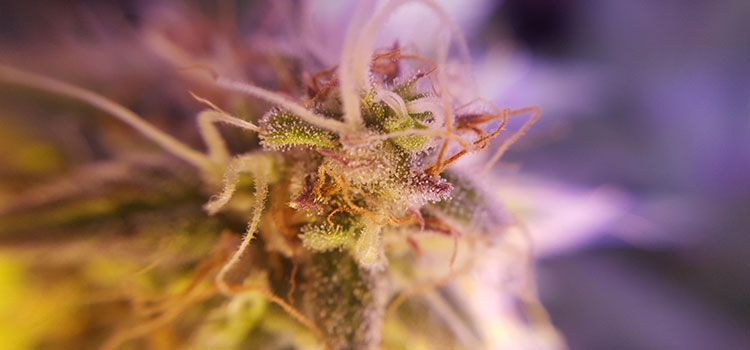



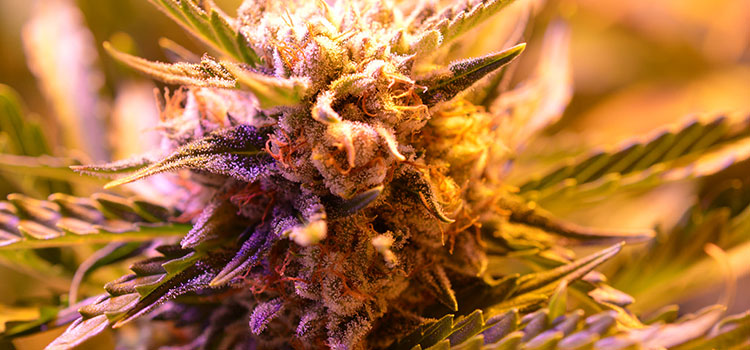
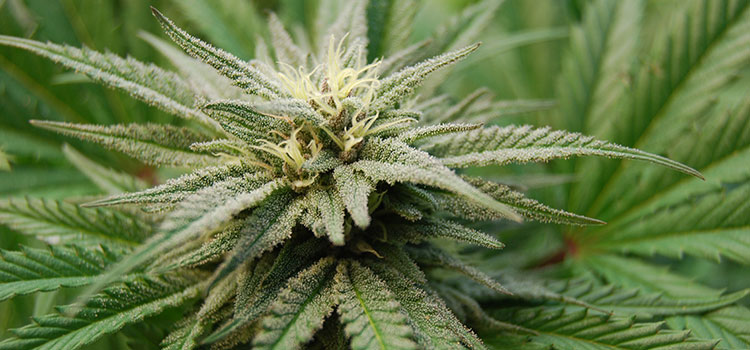

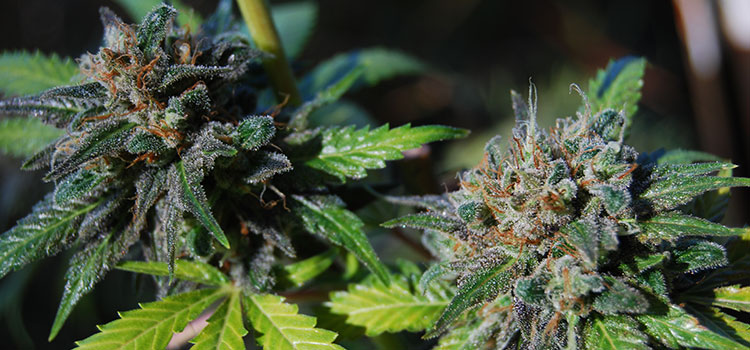
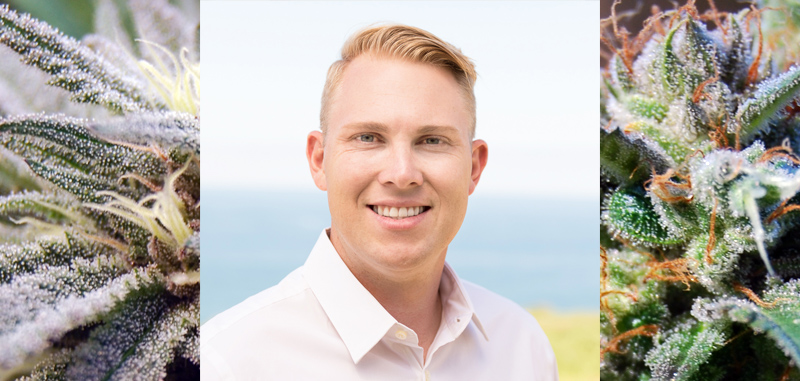
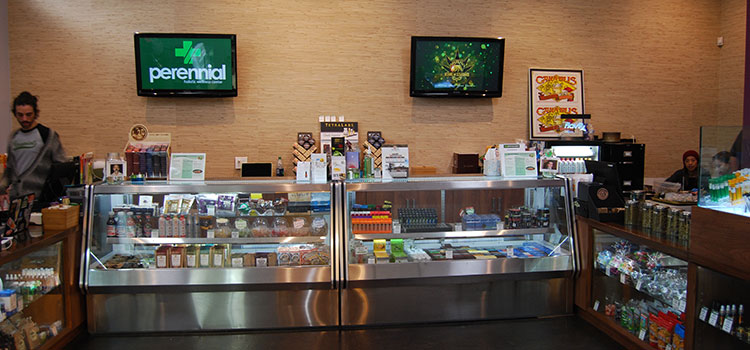
 Recently, the Ganjapreneur team was down in Southern California for the
Recently, the Ganjapreneur team was down in Southern California for the 
